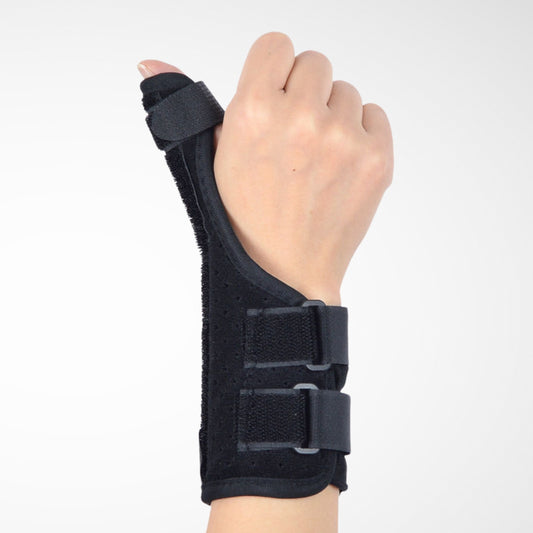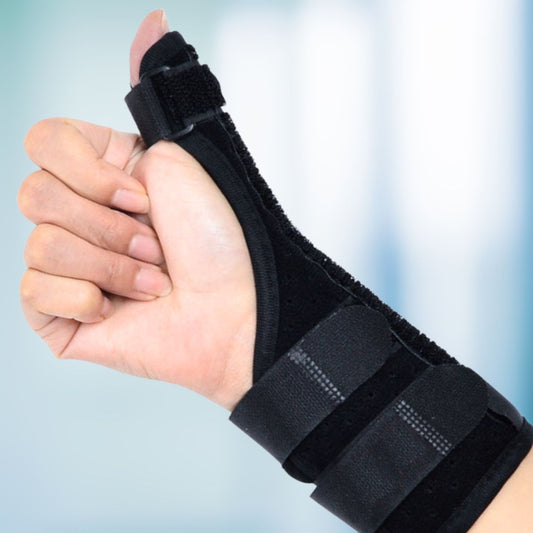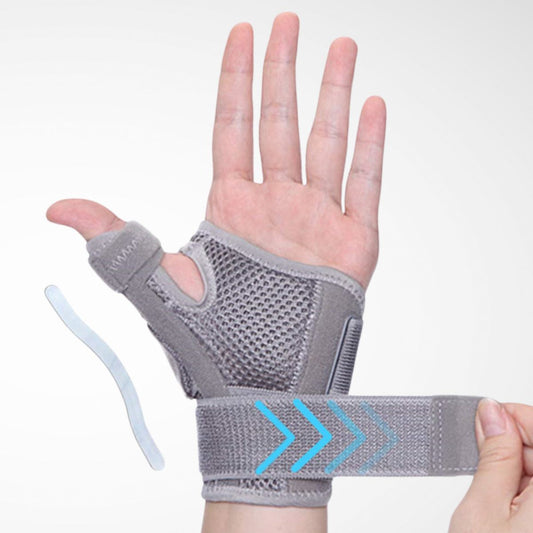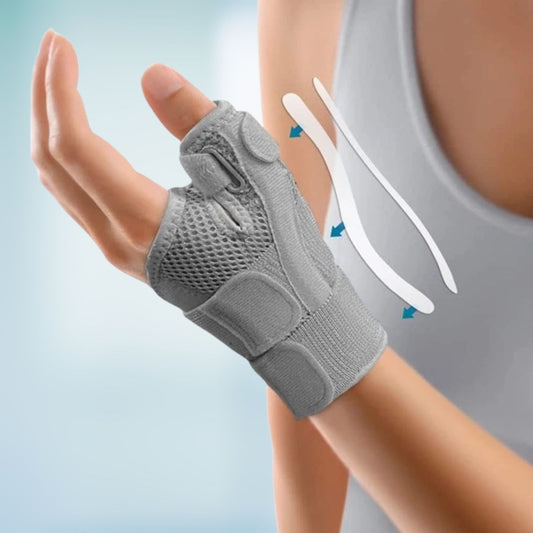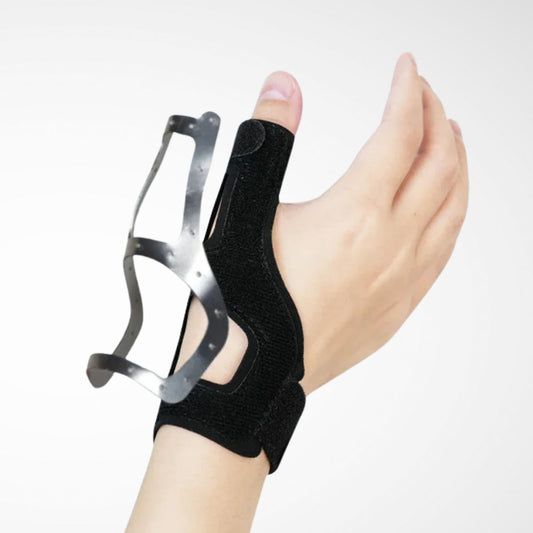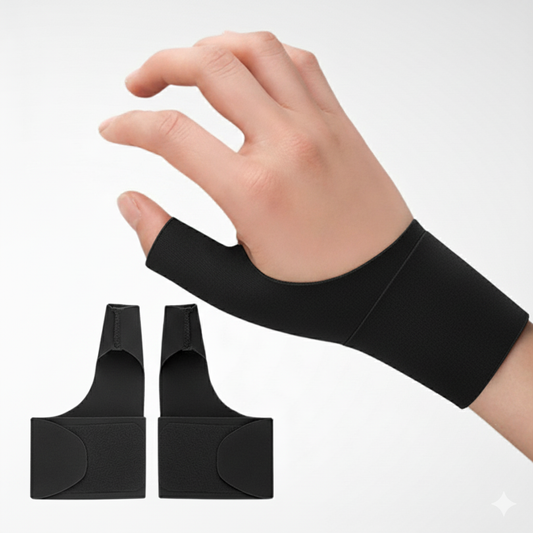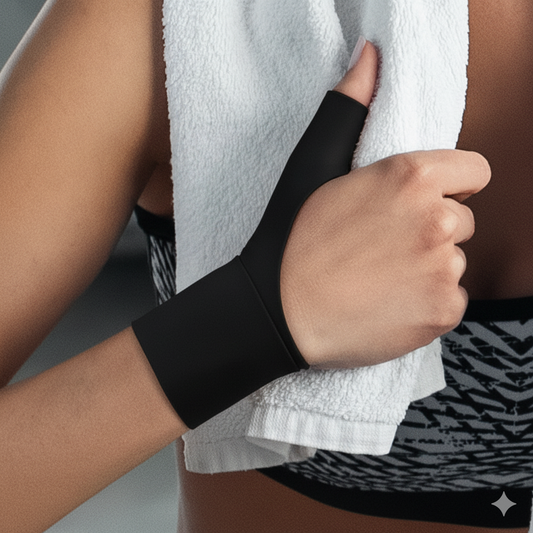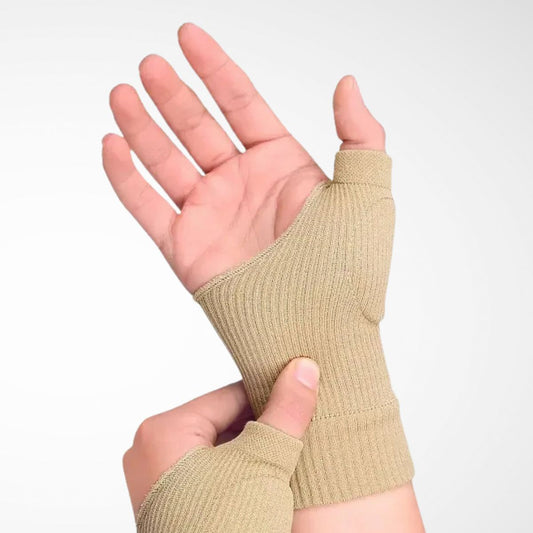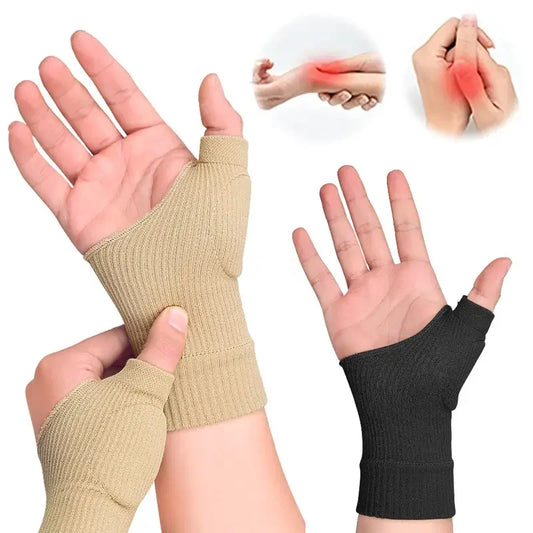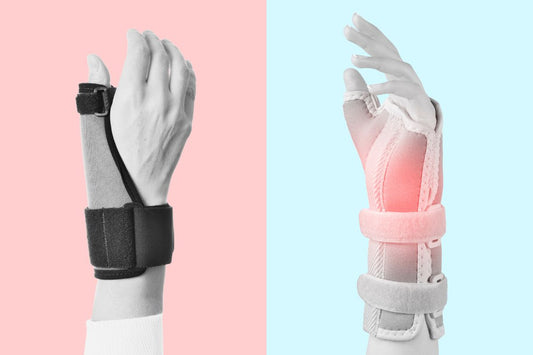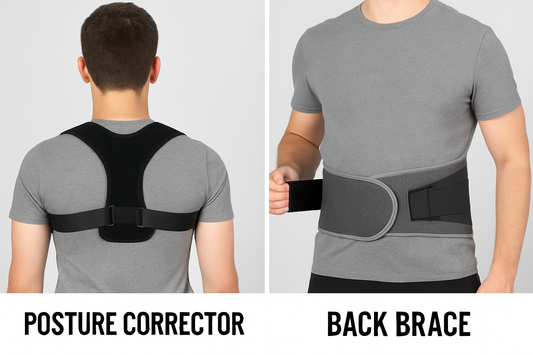If you’ve injured your thumb — whether from a fall, repetitive strain, or a sports-related mishap — you’ve probably heard that wearing a brace can help. But not all braces are created equal. With so many options on the market, it’s easy to end up with one that’s too bulky, too loose, or just not built for the kind of injury you have.
This guide will help you understand what makes a good spica splint for thumb sprains, what features to look for, and what to avoid — especially if you’re aiming for comfort, protection, and quicker recovery.
Why Use a Thumb Brace for a Sprain?
A thumb sprain usually involves stretched or torn ligaments — particularly the ulnar collateral ligament (UCL) near the base of your thumb. This injury can result in pain, swelling, reduced grip strength, and instability when pinching or holding objects.
A proper brace helps by:
- Immobilizing the injured joint to allow healing
- Reducing strain from everyday activities
- Providing compression to manage swelling
- Preventing reinjury during recovery
But for these benefits to happen, the brace actually needs to be the right kind.
Key Features to Look For in a Thumb Sprain Brace
1. Spica Design
A thumb spica brace is one that extends from the wrist and wraps around the thumb. It’s considered the gold standard for sprains because it:
- Limits thumb motion while allowing finger function
- Stabilizes both the thumb joint and wrist
- Distributes pressure evenly across the hand
Avoid generic elastic wraps that offer little to no structure — they may help with swelling, but not with ligament support.
2. Adjustable Support
Swelling can change throughout the day, especially in the first few days of recovery. A good brace should allow you to:
- Tighten or loosen support as needed
- Adjust thumb positioning if necessary
- Find a balance between structure and comfort
Rigid, one-size-fits-all models without adjustable straps often don’t work well for real-life use.
3. Comfortable Materials for All-Day Wear
If your thumb sprain is moderate or severe, you’ll likely be wearing a brace for several hours per day — possibly for weeks. Look for:
- Breathable fabric to reduce sweat
- Soft inner lining to prevent skin irritation
- Lightweight materials that don’t feel overly bulky
A brace you dread wearing won’t help you recover — comfort matters more than most people realize.
4. Secure Fit Without Cutting Off Circulation
The brace should stay in place during daily movement — whether you’re working, typing, or just holding your phone. But it should never cause:
- Numbness or tingling
- Redness from pressure points
- Reduced finger flexibility
Test the fit by pinching your thumb tip and checking that blood flow returns within 2 seconds.
What to Avoid in a Thumb Sprain Brace
Not all braces are created equal — and the wrong one can actually slow down your healing or make daily life more frustrating. Here’s what to steer clear of when shopping for a brace to support a thumb sprain:
❌ Too Much Flexibility
Braces that are too soft or stretchy — often marketed as “light support” — don’t provide enough structure to prevent your thumb from bending in ways that can aggravate a ligament injury. These wraps may offer some compression, but they won’t restrict joint motion, which is crucial in the first stages of recovery.
❌ Overly Rigid Metal Splints
At the other extreme, some braces use rigid metal bars or stiff plastic splints. While these might sound like better protection, they often sacrifice wearability. You’ll feel it every time you try to type, grip, or adjust your hand. This discomfort causes many users to abandon the brace too early — ironically increasing their risk of reinjury.
❌ Cheap Neoprene Wraps
Budget-friendly braces made from thin neoprene or elastic materials tend to offer one-size-fits-all compression without targeted support. These wraps don’t conform to the contours of your thumb joint, and they often loosen with wear, slipping around throughout the day. They may help with mild soreness, but not with true ligament stabilization.
❌ “Universal” Designs for All Injuries
Some products try to cover every condition — carpal tunnel, arthritis, tendonitis, and sprains — in one catch-all design. The result? A brace that doesn’t fully serve any of them. Thumb sprains need focused immobilization at the base joint, and a brace that doesn’t support that area properly may leave the ligament vulnerable to further damage.
BetterSpine Thumb Braces
At BetterSpine, our thumb brace and spica splints are built specifically with ligament support in mind — not just generic wrist pain or general compression.
We designed our brace to be:
- Supportive yet wearable for long hours
- Fully adjustable for swelling and activity level
- Breathable and lined for irritation-free recovery
🔗 Explore thumb sprain brace options
In Conclusion
Buying a thumb sprain brace shouldn’t feel like guesswork. If you’re dealing with pain, swelling, or instability after an injury, the right support can mean the difference between healing properly — or reinjuring yourself just by holding a cup of coffee.
Look for features that fit your injury, your comfort, and your day-to-day life. And when in doubt, start with something that was actually designed for thumb sprains — not just generic hand support.


